In recent years, Gulf Countries Solar Energy projects have taken center stage in the global transition towards renewable energy. Known for their vast oil reserves, nations like the UAE, Saudi Arabia, and Oman are now making headlines for a different kind of power—solar power.
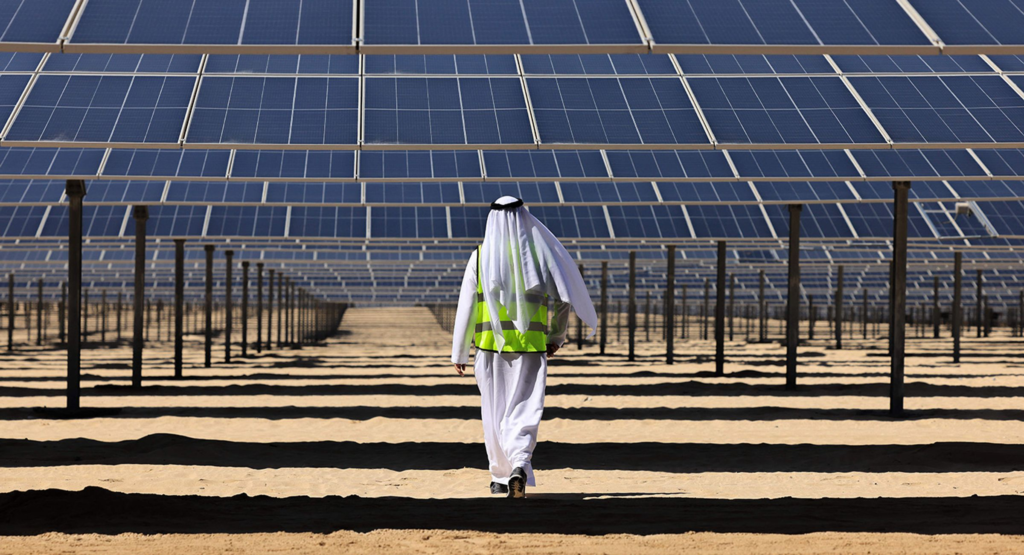
This shift isn’t just a trend; it’s a massive, well-funded effort backed by strategic government initiatives, long-term sustainability goals, and large-scale investments. Here’s how the Gulf region is fast becoming a global leader in solar energy adoption.
Why Are Gulf Countries Investing in Solar Energy?
From Oil Wealth to Sun Wealth
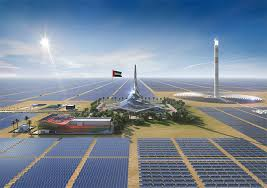
The Gulf region receives some of the highest levels of solar radiation in the world. Countries such as Saudi Arabia and the United Arab Emirates get over 3,000 hours of sunlight annually. That makes solar power a logical choice for energy diversification.
Oil reserves are finite, and as global pressure mounts to cut carbon emissions, Gulf countries see solar energy as a clean, sustainable alternative that ensures energy security for future generations.
Vision 2030 and National Energy Strategies
Saudi Arabia’s Vision 2030 and the UAE’s Energy Strategy 2050 have clear mandates for renewable energy. Both countries have set ambitious goals:
- Saudi Arabia aims to generate 50% of its electricity from renewables by 2030.
- The UAE targets 44% clean energy by 2050.
To reach these goals, billions are being invested in solar parks, R&D, and international partnerships.
Major Solar Projects in the Gulf
1. Noor Abu Dhabi – UAE
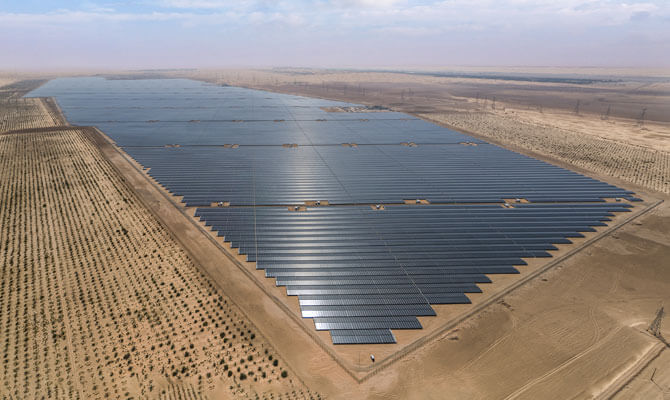
Noor Abu Dhabi is currently one of the world’s largest single-site solar plants, with a capacity of 1.2 GW. It powers over 90,000 homes and has reduced CO₂ emissions by 1 million metric tons per year.
2. Mohammed bin Rashid Al Maktoum Solar Park – Dubai
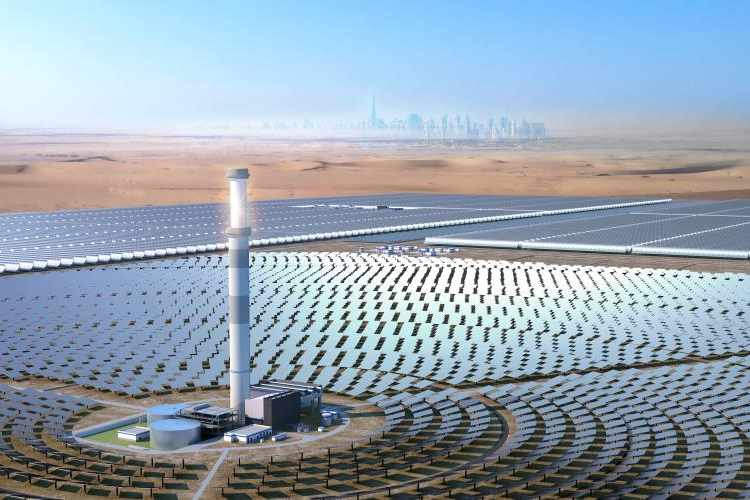
Set to reach a capacity of 5 GW by 2030, this project combines photovoltaic and concentrated solar power technologies. It is a flagship project under Dubai’s Clean Energy Strategy.
3. Sakaka PV Plant – Saudi Arabia
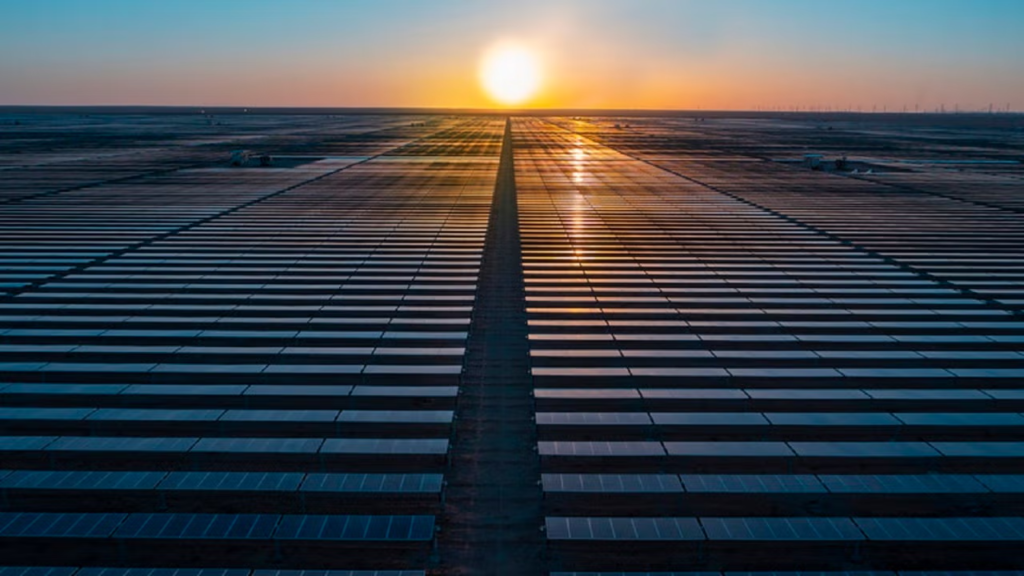
This was the Kingdom’s first utility-scale solar project and a significant milestone. Developed by ACWA Power, it has a capacity of 300 MW and sets the stage for larger projects under the Saudi Green Initiative.
4. Ibri II Solar Power Plant – Oman
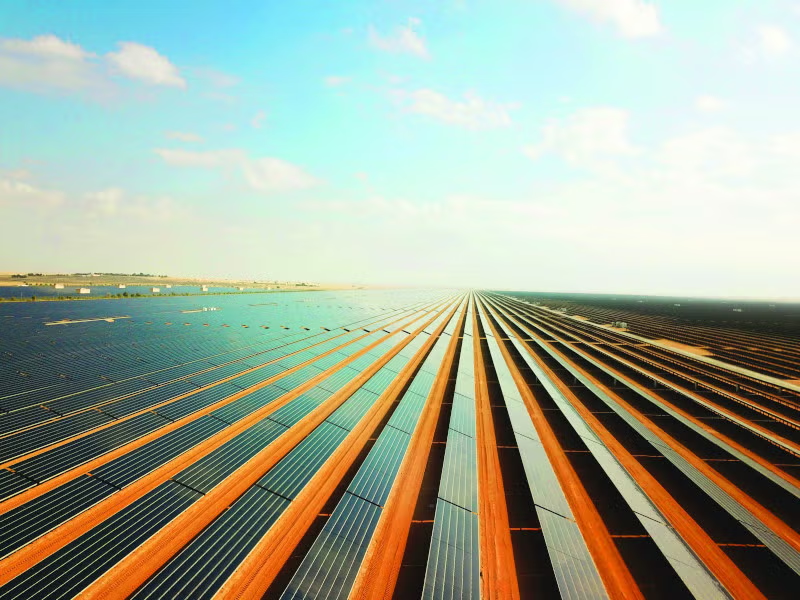
Oman has joined the race with the Ibri II plant, which supplies 500 MW of clean power, contributing to the country’s target of 30% renewable energy by 2030.
What Makes Solar Energy Attractive in the Gulf?
Economic Diversification
The Gulf countries are working to diversify their economies away from oil. Renewable energy projects bring in foreign investment, create jobs, and lay the foundation for a low-carbon economy.
Cost Efficiency
Solar power has become cheaper than fossil fuels in many parts of the world. The Gulf region, with its abundant sunshine and flat desert land, is ideal for low-cost, large-scale solar farms.
In fact, the UAE set a world record for the lowest solar energy price in 2020 at just 1.35 cents per kilowatt-hour.
Challenges on the Path to Solar Leadership
Harsh Climate Conditions
High temperatures and dust storms can affect the efficiency of solar panels. However, Gulf nations are investing in innovative technologies like panel-cleaning robots and heat-resistant materials.
Grid Integration
Managing a mix of solar and traditional power sources requires advanced grid systems. Countries like Saudi Arabia are modernizing their energy grids to balance supply and demand fluctuations.
International Collaboration and Leadership
Hosting Global Events
The UAE hosted COP28 in 2023, reinforcing its commitment to climate leadership. These platforms allow Gulf countries to showcase their solar achievements and forge global partnerships.
Regional Solar Alliances
The Middle East Solar Industry Association (MESIA) helps unify regional efforts by promoting knowledge sharing and policy development.
The Future of Gulf Countries Solar Energy
The next decade promises even greater momentum. Here’s what lies ahead:
- Floating solar projects to optimize water use.
- Energy storage systems to ensure a stable power supply.
- Green hydrogen production using solar power for global export.
As prices drop and technology improves, Gulf Countries Solar Energy adoption will only accelerate. From reducing emissions to leading innovation, the Gulf is turning sunlight into a symbol of progress.
Conclusion: Gulf Nations Are Now the Solar Trailblazers
In 2025, it’s clear that Gulf countries are no longer just oil giants—they are becoming solar energy pioneers. With strong government backing, cutting-edge technology, and international cooperation, the region is setting new benchmarks in renewable energy.
The success of Gulf Countries Solar Energy efforts proves that transitioning to clean power is not only possible but profitable—even in regions historically dependent on fossil fuels.
Final Thoughts:
Keep your eyes on the desert. What was once a sea of oil rigs is rapidly transforming into a landscape of solar panels—powering the future, one sunbeam at a time.
read more- Top 10 Gulf Agriculture Innovations Revolutionizing Farming in 2025



